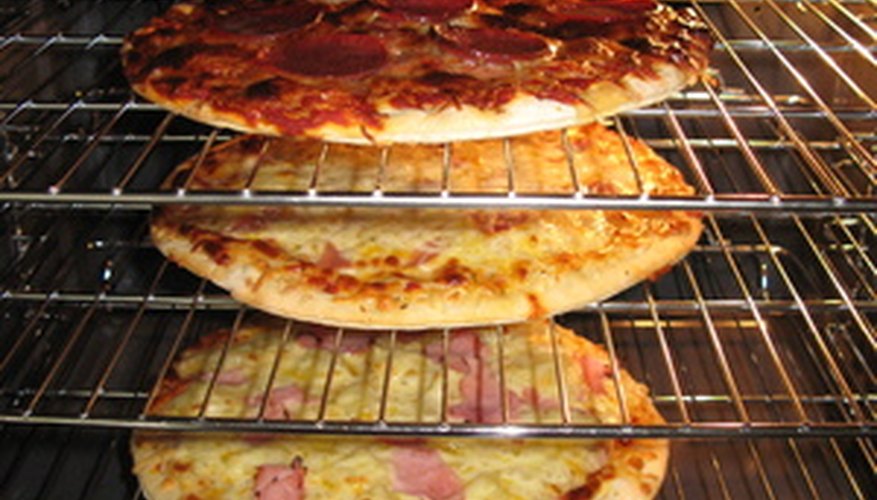If you are dissatisfied with the cooking performance of your traditional oven, microwave or toaster oven, halogen and convection ovens are possible alternatives. Both ovens circulate the heat they produce to ensure that foods cook evenly. And because heat distribution is more even within their cooking chambers, halogen and convection ovens tend to cook foods faster than standard oven varieties and can do so at lower temperatures. Despite their similarities, however, there are many differences between halogen and convection ovens.
Heat Generation
Halogen ovens generate heat using halogen light bulbs. Like standard, incandescent light bulbs, halogen bulbs use filaments that glow with heat. However, halogen, a non-metallic, reactive gas, surrounds filaments in halogen light bulbs, which causes the bulbs to glow brighter and hotter. In contrast, convection ovens typically utilise the same types of heating elements that traditional ovens use. These include electric coils, which stimulate electrical currents to produce heat, and gas burners, which ignite natural gas to produce heat. However, there are some convection ovens that create heat using infrared technology, producing electromagnet radiation that is beyond the visible spectrum. While some convection ovens use two heating elements -- one at the oven's top and one at the oven's bottom -- more efficient models have three heating elements. The third heating element in a convection oven heats the incoming air the oven uses for heat circulation.
- Halogen ovens generate heat using halogen light bulbs.
- However, there are some convection ovens that create heat using infrared technology, producing electromagnet radiation that is beyond the visible spectrum.
Format
The majority of halogen ovens on the market are countertop or portable oven models. This means you can set up and cook with a halogen oven wherever there is a sturdy, flat surface and an electrical socket. In contrast, most convection ovens have built-in formats. As with traditional gas and electric ovens, this means you install convection ovens in a permanent place in the kitchen. However, manufacturers do produce some portable, electric convection ovens. And technically, because halogen ovens move air to transfer heat into foods, you can consider halogen ovens a type of portable, electric convection oven.
- The majority of halogen ovens on the market are countertop or portable oven models.
- And technically, because halogen ovens move air to transfer heat into foods, you can consider halogen ovens a type of portable, electric convection oven.
Cooking Options
Halogen ovens and convection ovens are highly versatile cooking machines. You can use them to roast, toast, broil, grill, bake and even dehydrate foods. However, halogen ovens offer one cooking option that standard convection ovens cannot: steaming. While convection ovens, like traditional ovens, have exposed heating elements that can malfunction in the presence of excessive water, halogen ovens have their heating elements -- halogen bulbs -- behind layers of glass. In addition to allowing you to observe the foods you are cooking more easily, the glass construction of halogen ovens allows you to pour water into them to produce without fear of causing damage.
- Halogen ovens and convection ovens are highly versatile cooking machines.
- However, halogen ovens offer one cooking option that standard convection ovens cannot: steaming.
Which Is Better?
Convection ovens are typically larger than their halogen counterparts. So if you regularly cook for a large family or otherwise require a lot of interior cooking space, convection ovens will likely be a better option. However, if you are looking for a device that can provide you with a quick meal, both at home or while travelling, a halogen oven may prove a better investment. Halogen ovens are also less expensive, typically costing between £45 and £84. Convection ovens, in contrast, typically cost £650 or more.
- Convection ovens are typically larger than their halogen counterparts.
- Halogen ovens are also less expensive, typically costing between £45 and £84.
